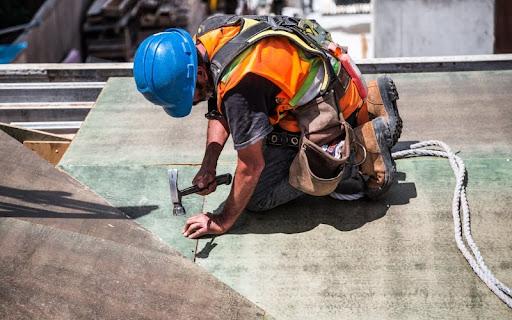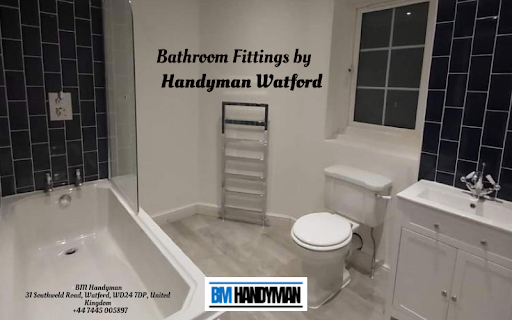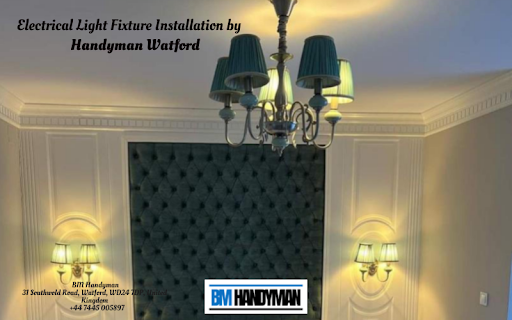- Accueil
- Blog
Blog
What Makes Domiciliary Care the Preferred Choice for Aging in Place
Le 04/07/2023
Introduction
As we age they tend to prefer to live in the comfort and security of their own home. This need for independence and a feeling of belonging to their communities has resulted in the growing the popularity of domiciliary care. Domiciliary care is also referred to by the name of homecare, offers individualized support and assistance for people who want to remain at home as they get older. In this piece we will look at why domiciliary care is the most popular option for those who wish to age in home and how it helps people to live a full and satisfying life within peace and comfort in the privacy of their home.

1. Individualized Plan of Care: Domiciliary Care offers customized care plans that are designed to meet the individual requirements and preferences of every person. Expertly trained professionals conduct thorough examinations to determine the particular needs of the person who is receiving treatment. Care plans incorporate elements like mobility limitations, medical conditions as well as medication management and individual preferences. This method of personalization ensures that the treatment provided is tailored to the person's particular needs and enhances the overall health of the patient.
2. Independence and autonomy: Domiciliary care is a way to promote autonomy and independence for those who are aged in their homes. The professionals who work with people and offer assistance in everyday activities, while aiding them in maintaining their independence. They aid individuals in performing tasks like dressing, personal hygiene food preparation, food cooking, medication administration and chores around the house. In addition, by promoting independence, domicile support allows people to maintain the dignity of their everyday life.
3. Affordability of familiar surroundings Ageing in place with domiciliary care permits people to remain at ease in their homes and be surrounded by familiar surroundings, belongings, and cherished memories. This comfort gives them a sense of security and emotional wellbeing and helps ease the anxiety associated with moving to a new place. A familiar environment will also help improve cognitive function and retention of memory.
4. The continuity of relationships Domiciliary care helps people to keep their connections with friends, family, and their neighbors. The professionals who provide care not only offer crucial support, but also companionship and emotional connections. This ongoing relationship can improve the general well-being as they continue to take part in activities that are social and keep the sense of belonging to their communities.
5. Personalized Health Monitoring: Domiciliary services include individual health monitoring that ensures people's safety and wellbeing. Healthcare professionals can aid with the administration of medications, keep track of vital signs and coordinate with healthcare professionals. This proactive approach can help detect any health issues in the early stages, which allows for prompt intervention and reduction of health-related complications.
6. Cost-Effectiveness Domiciliary care may be a more cost-effective alternative to care facilities that are institutionalized. When receiving care at home, people can avoid the costly expenses associated with residential facilities. Domiciliary care can be tailored to meet the particular needs and budget of the person and makes it a more affordable option for seniors living in an area.
7. Flexibility and adaptability: Domiciliary services offer the flexibility and adaptability needed to meet ever-changing needs. The amount of care and support offered can be altered as an individual's requirements change in time. Domiciliary health care facilities are able to accommodate changing schedules, alter or increase regular visits and alter the plan of care to deal with any new health issues or changes in situations.
8. Assistance with emotional issues and companionship Domiciliary caregivers are not just there to assist with the tasks that are practical, but they also offer emotional assistance and friendship. They have meaningful conversations, are attentive to the person's needs, and provide friendship and understanding. This kind of emotional support can help combat feelings of loneliness, isolation and depression which can be common among seniors.
Conclusion
Domiciliary care is now the most popular option for people who want to age in place because of its emphasis on personal health, independent, comfort and the enhancement of well-being overall. Through the provision of individualized care plans, encouraging autonomy and independence, which allows people to live at the ease of their own home, and providing individualized health monitoring and support, domiciliary care helps people in achieving their goals as they get older. The continuous relationships, efficiency and flexibility as well as emotional support offered through domiciliary services make it a great choice for those looking to keep their dignity, independence, and connection to the community as they get older.
When to Seek Plastering Services in Luton: Enhancing the Walls and Ceilings
Le 03/07/2023
The ceilings and walls of your house have a significant impact on the overall appearance and function of your space. As time passes, they could get damaged by damage, cracks or uneven surfaces that can affect the appearance of your home's interior. In these instances, getting professional services for plastering in Luton is the best option to restoring and improving the appearance of your ceilings and walls. In this article, we'll examine the best moment to look into plastering services and the benefits they could bring to homes in Luton.

1. Remodeling or renovating projects If you're planning to do a remodel or renovation project in Luton Plastering services must be on your list of priorities. When you're building an extension, renovating an area, or upgrading your current space the importance of plastering is a crucial part in creating an even finish. Professional plasterers will make sure that your ceilings and walls are prepared properly and can provide an even surface for wallpaper, paint or any other finish.
2. Cracks and Damaged Surfaces The cracks holes, dents, or dents in your ceilings and walls do not just affect the appearance but also reveal the root of issues. It is crucial to fix these issues promptly to avoid further damage and to maintain the structure of your home. Expertly-trained plastering professionals can fix and strengthen damaged surfaces, giving them an attractive and durable look.
3. Uneven or rough textures Ceilings and walls are uneven or have a rough texture, then plastering may make an even and smooth surface. This is especially beneficial when you plan to apply wallpaper or paint because it guarantees an impeccable and professional outcome. Professionally trained plasterers are able to smooth out imperfections and create a smooth finish changing the appearance as well as the feel space.
4. Improved Soundproofing and Insulation Plastering can also help improve insulation and soundproofing of your home. Through the use of plasterboard or other specific materials, the plasterers can create a barrier that can limit the transmission of noise between rooms and outside. In addition, plastering can increase thermal insulation, resulting in an energy-efficient house and possible savings on heat and cool.
5. Restoring Historic or Period Features If you have a heritage or period home in Luton conserving its distinctive characteristics is essential. Plastering services can help you restore and recreate traditional plasterwork such as cornices, decorative moldings as well as ceiling roses. Professionally trained plasterers possess the skills and experience to recreate historical styles and workmanship, while ensuring that the original style of your house is maintained.
6. Preparing the surface for painting or wallpapering Prior to applying wallpaper or paint it's crucial to prepare a well-groomed surface. Plastering services provide an even and sturdy foundation for your desired finishes that allow them to stick to the surface with a perfect appearance. No matter if you're going for a striking pattern, vibrant color scheme designs, or a simple style, professional plastering guarantees the highest quality and durability.
7. Increased Property Value Investing on professional wall-plastering may substantially increase property value home in Luton. Clean and well-maintained ceilings and walls can create a pleasant first impression, which makes your house more appealing to prospective buyers. Fresh and well-finished interiors is a reflection of pride in your home and will set your home out in a highly competitive real property market.
8. Experience and expertise Plastering is a highly specialized profession which requires knowledge and experience to produce the desired results. The best plasterers from Luton have been trained and have a wealth of experience in their field. They are aware of the various plastering methods, materials, and tools that are required for various kinds of surfaces and conditions. Their expertise assures that the job gets executed efficiently, with a keen eye to the smallest of details, and in a the quickest time possible.
In conclusion, seeking out plastering solutions in Luton is crucial if you're looking to upgrade the ceilings and walls of your house. If you're remodeling, fixing damage and cracks, improving the texture of your walls, or getting ready for wallpaper or paint professional plasterers can provide superior outcomes. Their expertise does not just enhance the appearance of your home but also aids in insulation, soundproofing and boosting the value of your home. If you are experiencing any problems or desire to refresh your walls and ceilings, don't hesitate look for the assistance of a reliable plastering firm located in Luton.
What You Need to Know About Plastering Services in Luton
Le 03/07/2023
Introduction:
Plastering is a crucial component of any building or renovation undertaking in Luton. It's a skillful trade that involves the application of an application of plaster on ceilings, walls and other surfaces in order to provide an attractive and long-lasting appearance. If you're building a brand new house or renovating an existing one hiring a reputable plastering company in Luton is vital to ensure top-quality work and a perfect result. In this article, we'll examine the most important aspects of the plastering service that are available in Luton that you should know in order to make an informed decision on your project.

1. Types of Plastering:
There are a variety of techniques for plastering that are used in various areas of a home. The most popular types are:
• Skimming is the process of applying the small amount of plaster on the walls or ceilings in order to give an even and smooth surface.
• Rendering is the method of applying plaster to exterior walls to shield them from elements of the weather and to provide insulation.
• Dry Lining is the fixing of plasterboard to walls and ceilings, and then applying a skim coat to create seamless finishing.
• Venetian Plastering is a design technique that involves the application of multiple levels of polished design to give an expensive, marble-like surface.
2. Importance of Professional Plastering:
A professional and experienced plastering company in Luton is essential for a variety of reasons:
• Expertise: Professional plasterers possess the skills and knowledge to create a perfect final. They know the right methods, materials and equipment required for various types of work.
• Saving time and money DIY plastering is time-consuming and could cause costly mistakes. Professional plasterers are skilled and are able to complete the work within the stipulated timeframe.
• High-Quality Finish: Professionally applied plastering services guarantee a top-quality finish that will add value to your home. They pay attention to details, and ensure that surfaces are even, smooth and free of imperfections.
• Proper preparation Professional plasterers are aware of the importance of correct surface preparation. They will make sure that the walls are spotless dry and dry. They will also ensure that the walls are suitable for the process of plastering. This is vital to the durability for the wall.
3. Licensing and Insurance:
If you are hiring a service for plastering in Luton it is vital to verify if they're insured and licensed. A certified plasterer has met the standards and regulations required which gives you the assurance that they're qualified to perform the task. Insurance protects the plasterer as well as the owner of the property in case of any injuries or accidents that might occur in the course of putting up plaster.
4. Experience and Reputation:
Be aware of the history and reputation of the plastering company you are planning to employ. Find professionals who have experience in the field and excellent reviews from clients. Expert plasterers have perfected their skills over time and are able provide guidance and solutions for particular problems with plastering.
5. Portfolio and References:
Ask the plastering company to provide their portfolio as well as references from past clients. A look at their work from the past will provide you with an idea of their quality and the range of their services in plastering. Referrals from happy customers can help you assess their reliability and professionalism.
6. Cost and Estimates:
Get cost estimates in detail from various plastering companies in Luton. The estimates should include labor costs, materials, as well as any other charges. Beware of very low estimates, since they may be indicative of poor quality of work or low-quality materials. It is crucial to strike an equilibrium between cost and quality.
7. Communication and Collaboration:
Effective communication is vital when you work with the plastering company in Luton. It is important to clearly communicate your expectations, and also discuss any particular requirements or concerns you might have. A professional plasterer must be available to listen, offer suggestions and keep you updated throughout the process.
8. Timeline and Availability:
Discuss the anticipated timeline for the project of plastering with the contractor. Be sure that they are able to meet your preferred timeframe and they are able to begin the project when it is required. Communication about deadlines in a clear manner can help prevent any delay or confusion.
Conclusion:
In the case of plastering services in Luton employing a skilled professional is essential to achieve an impeccable and long-lasting final. Think about the different kinds of plastering, the significance of expert expertise license and insurance as well as the expertise and reputation of the plastering company including their references and portfolio as well as cost estimates, collaboration and communication in addition to the timeframe and availability. If you consider these elements as well as making an informed choice you can be sure that your project of plastering in Luton is done with the highest quality which will enhance the aesthetic appeal and value of your property.
Mastering the Art of Plastering: Tips and Techniques for a Flawless Finish in Luton
Le 03/07/2023
Introduction
Plastering is an essential technique that can alter the appearance and feel of your house in Luton. If you're planning to renovate, repair or constructing new walls, getting an impeccable finish on your plaster requires a lot of precision, skill and a keen eye on the details. Although hiring a professional for plastering is a must for large tasks, it's equally important to know the fundamentals of the techniques used to apply plaster. In this article we'll look at the best practices and tricks to assist you in mastering the technique of plastering and get an impeccable final product in Luton.

1. Prepare the Surface
Before you start putting down the plaster it's important to make sure you prepare the surface in a proper manner:
• Cleaning the surface: Take off any dirt, debris as well as old flakes of plaster off the surface. Check your surface is free of any contaminants that might affect the bonding to the surface.
• Repair damaged areas: Fix any holes, cracks, or damaged areas with the appropriate filler or patching compound. Smooth the areas that have been repaired to create a smooth surface.
• Apply a primer in certain situations applying a primer to the surface prior to the application of plaster can improve adhesion as well as improve the overall appearance. Contact a professional an established supplier to determine the need for a primer for the specific job you are working on.
2. Mix the Plaster
Mixing the plaster correctly is vital to get the smoothest and most workable consistency:
• Make sure you use the correct ratio Use the instructions of the manufacturer to determine the appropriate proportion between water and plaster. The ratio can vary based on the particular kind and type that you're working with.
• Add the plaster to water Begin with placing clean water into an empty container or mixing bucket Then, gradually add the plaster mix by stirring it continuously. It is important to mix the plaster with the water to prevent clumps from forming and to ensure a consistent mix.
• Mix thoroughly Make use of a mixing paddle or motor mixer for mixing the mortar until you get the consistency of a smooth, lump-free. Avoid mixing too much because this could cause the cement to set too fast.
3. Applying the Plaster
When applying the plaster it is essential to keep the same technique and control:
• Start with the Scratch Coat Begin by applying scratch coats of plaster in order to create an initial layer. Make use of a trowel for spreading the plaster evenly across the surface and ensure a uniform thickness. Make lines of horizontal scratching on the surface by using a tool to scratch to help improve adhesion of the subsequent coat.
• Apply the top Coat When the scratch coat is partially dried then apply the top layer of the plaster. Make use of a trowel for spreading all over the surface, working in smaller sections at each time. Make sure to maintain a uniform thickness and smooth any areas or lines that are uneven with a feathering technique.
• Feathering Technique: To create a seamless finish, employ a feathering method to apply the final coat. The trowel should be lightly smacked across the surface and gradually reduce tension as you get away from the area. This method allows you to bring the edges together and smooth the transition between the plastered and unplastered areas.
4. Trowel Techniques and Finishing
The use of trowels is vital to get the perfect and professional plaster finish:
• Skimming A technique that is used to create a level and smooth surface. Make use of an unclean, dampened trowel to gently skim across the plastered surface and remove any blemishes or lines.
• Polishing: Once the plaster has dried partially and is clean, you can use a dry trowel to smooth the surface. Apply pressure gently and make circular movements to smooth out any remaining imperfections, and get polished edges.
5. Drying and Sanding
Let the plaster completely dry before proceeding to the final finishing and sanding:
• drying time: drying duration for plaster varies based on the factors like temperature, humidity and the thickness. Follow the manufacturer's guidelines or consult an expert to determine the proper drying time.
• Sanding: When the plaster is dry Use sandpaper of fine-grit to smooth any uneven areas such as ridges, imperfections, or cracks. Be careful not to oversand because this could remove excessive plaster and damage the appearance.
Conclusion
Learning how to master the art of plastering requires patience, practice and a keen eye for the smallest of details. With these suggestions and methods, you will be able to create a flawless finish for the comfort of your Luton home. But, it's essential to acknowledge that you aren't able to do it all with your abilities and get help from a professional for more complex or lengthy work in the field of plastering. A professional plasterer in Luton can offer expert workmanship that will save you both time and energy, and provide a an impeccable finish that increases the appeal as well as the value house.
Transforming Your Outdoor Space: Landscaping and Gardening Tips
Le 03/07/2023
Introduction
Outdoor space can be a part of your home, a place that you can sit back or entertain and be in touch with the natural world. The transformation of your outdoor space with landscaping and gardening can give fresh life and beauty to your outdoor space. If you have a large backyard or a comfortable balcony this article will provide helpful tips and ideas to create an amazing outdoor paradise.

1. Assess Your Space
Before you begin any gardening or landscaping projects be sure to examine the space you have for your garden. Take note of the dimensions the shape or layout of the yard in addition to any existing features such as structures, trees or utilities. Consider the function of your space - is it for relaxation, entertainment or to grow plants? This first assessment will determine your design decisions and help you create a coherent design.
2. Create a Design Plan
Making a plan of design is essential to achieve your ideal outdoor style. Think about elements like paths, seating areas water features, and even plant beds. Pick a style that best reflects your personal style, whether modern or rustic--and ensure it matches the architecture of your home. Create a sketch of your idea or utilize online tools for design to visualize the layout prior to making any modifications.
3. Incorporate Plants and Greenery
Greenery and plants are vital components of outdoor spaces. Be aware of the climate and sun conditions in your region when choosing plants. Pick a mixture of plants, flowers and trees that offer an interest throughout the year and diversity. Use various sizes, colors and textures to create a visually appealing. Do not forget to add plant pots and baskets to make the most of the space and add greenery in smaller spaces.
4. Implement Hardscaping Elements
Hardscaping components, such as decks, patios and paths, can add the structure and function in your backyard. Select materials that work with the overall style, for example, natural stone pavers, or even wood. Take into consideration the dimensions and layout of your hardscaping components to make sure they're proportionate to the area and offer enough space for furniture or movement.
5. Focus on Lighting
Lighting outdoors not only improves the ambience of your room but also helps extend its use throughout the evening hours. Include a variety of lighting options, such as lighting fixtures for overhead, pathway lighting as well as accent lights. Accentuate key features such as plants, water structures, and other features. Select weather-proof and energy-efficient lighting fixtures that are able to be used outdoors and withstand elements.
6. Consider Water Features
Water features, like water features, such as ponds, fountains or waterfalls, can help create an atmosphere of calm and peace within your backyard. They also attract wildlife, and provide visual appeal. Examine the dimensions and size of your area to determine the most appropriate water feature. If you are limited in space, you may want to consider the smaller size of a fountain or mounted wall water feature. If you have room the pond or waterfall could become an important feature in your backyard.
7. Establish Functional Zones
Separate your backyard into zones according to your needs and personal preferences. Separate areas to relax, eat and even gardening. Include privacy screening or hedges to separate each area and create a sense of privacy. This will let you make the most of your outdoor space efficiently and be able to accommodate a variety of types of.
8. Plan for Maintenance
The maintenance of your garden is essential to its beauty over time and well-being. Take note of the needs for maintenance of your plants, which includes pruning, watering and fertilizing. Create a space for storage that houses gardening tools as well as equipment in order to keep them in order and readily accessible. Make sure you regularly clean and check your hardscaping materials to ensure that they are not damaged or degraded.
9. Incorporate Sustainable Practices
When you're transforming the outdoor area, you should consider using sustainable methods to reduce your impact on the environment. Choose native plants that have been adaptable to the local climate that will require less water and care. Install rainwater harvesting systems to provide irrigation to your plants. Utilize composting to reuse organic waste, and feed your garden. These green practices won't only help the environment, but will also will save you cash in the long term.
Conclusion
The transformation of your outdoor space with landscaping and gardening can greatly increase the appeal of your home and provide a place to relax and enjoy. Through analyzing your area by creating a design including plants and vegetation, using hardscaping features and focusing on lighting, focusing on water features, creating areas of use, creating plans maintenance, and using green methods, you can make an amazing outdoor space. So, put on your sleeves, don your gardening gloves and prepare to transform your backyard into a paradise of tranquility and beauty.
When to Install Skirting Boards in Your Home
Le 03/07/2023
Introduction
Skirting boards, often referred to by the name of baseboards are often overlooked component in the design of homes and renovation. These attractive and practical components are positioned along the wall's bottom giving a sleek and a polished appearance to any room. While skirting boards can be put in place anytime but there are some instances when it is recommended to think about the installation. In this article, we'll look at the best times to have skirting boards installed in your home in order to enhance the aesthetics and function of your home.

1. Renovation or Remodeling Projects
If you're planning to do a remodel or remodeling project for your home, it's the ideal time to look into the installation of skirting boards. When walls are painted or flooring is replaced, or when new wall treatments are being put in place and skirting boards are the ideal final effect. They can help conceal the uneven spaces between the floor and the wall which creates a tidy smooth transition. By putting up skirting boards in the renovation process, you'll be able to get a smooth and cohesive design throughout the room.
2. Covering Imperfections and Gaps
As time passes the floors and walls can form gaps or imperfections that are hard to repair. Cracks, edges that aren't even, or gaps in expansion can affect the overall appearance of the room. Skirting boards are a viable solution for hiding the gaps and imperfections. They offer a neat and seamless covering, creating an attractive transition between the floors and walls. The installation of skirting boards can dramatically enhance the overall look of a room, by concealing imperfections and gaps that are not attractive to the eye.
3. Protection of walls from damage
Skirting boards do not only provide an aesthetic aspect to your home, but they also serve a useful function by shielding your walls from being damaged. They provide a barrier against any accidental impact like furniture bumps and scuffs caused by vacuum cleaners or scratches from pets. If you do not have skimming boards in the bottom section of your walls could be susceptible to chips, dents and marks that are unsightly. With skirting boards you'll be able to protect your walls and maintain their impeccable condition, decreasing the requirement for frequent repairs or touch-ups.
4. Concealing Wiring and Cables
With the increase in electronics and entertainment devices in homes managing wires and cables is now a standard issue. Skirting boards provide a practical solution that provides a discrete solution to hide unattractive cables. They could also incorporate an integrated cable management system that can conceal cables, making your home appear more tidy and clutter-free. If you're planning to set up your home office or entertainment area or other space that has many devices Installing skirting boards that have integrated cable management will significantly improve the appearance and efficiency of your space.
5. Enhancing Insulation and Energy Efficiency
Skirting boards are also a contributing factor to better the insulation as well as energy efficiency of your home. By sealing the gaps between your wall and floor they can to stop heat loss and drafts especially in older or poorly-insulated homes. Skirting boards function as an additional layer of insulation decreasing the transfer of cold and hot air. This can result in lower energy bills and an improved indoor climate. If you're looking to increase the efficiency of your house Installing skirting boards could be an investment worth it.
6. Adding Architectural Detail and Style
Skirting boards come in a variety options of designs, styles and finishes that allow you to add architectural details and style to your house. If you like a traditional design, or more elaborate look or modern and contemporary style there are skirting boards choices to match your style preferences. Installing skirting boards can alter the ambience of a room and give it a sophisticated and refined appearance. It's a chance to show your personal style while elevating the overall look of your house.
Conclusion
While skirting boards can seem like a minor thing however, their installation could make a huge difference to the design and aesthetics of your house. When you're embarking on an upgrade project, seeking to hide gaps and imperfections or protect walls, hide wiring, increase insulation, or simply add architectural details Installing skirting boards is an important look at. These versatile options offer a polished appearance to your home but also have practical advantages. If you're looking to improve the look of your house It's the perfect time to think about installing skirting boards and revel in the changes they make.
What to Consider When Installing Skirting Boards for a Polished Look
Le 30/06/2023
Skirting boards are also referred to as skirting boards or baseboards are an essential element of interior design, which adds the finishing final touch to any space. They are not just a means of protecting walls from damage caused by kicks, furniture as well as the general wear and tear, but they also enhance the overall aesthetics of the room. If you are considering installing skirting boards at the home of yours, you must consider many aspects to take into consideration to create an elegant and seamless appearance. In this post, we'll look at the things to think about when putting up skirting boards to achieve professional appearance.

1. Materials Selection: The most important thing to think about in the installation of skirting boards choosing the right type of the material. Skirting boards come in a wide range of materials like wooden boards, MDF (medium-density fiberboard) and PVC (polyvinyl chloride) or composite material. Each material comes with distinct advantages and features including the durability, installation ease as well as cost. Take into consideration the design of your house as well as the desired level of maintenance, and your total budget when choosing the best material for your skirting boards.
2. Size and width: Both the width and height width of skirting boards play a crucial part in creating a balanced and balanced look. The typical length of skirting boards typically ranges from 70 to 100mm, however, it is subject to change based on your personal preferences and the design of the space. Be aware of the ceiling's level, architectural elements, and the overall size of the room when determining the right size and height of skirting boards. A higher-end skirting board can give an elegant and lavish appearance, while smaller ones can appear more minimal and modern.
3. Style and design The skirting boards come in a variety of designs and styles that range from straight and simple profiles to more intricate and attractive alternatives. The style you choose is important to match the overall design and architectural aspects of the space. Take into consideration the doors, moldings, as well as architectural features to guarantee that they are in harmony and consistent. Traditional homes could have more intricate and elaborate skirting boards but modern homes typically prefer simpler and more minimalist designs.
4. Colour and Finish Selecting the appropriate shade and color for your boards of skirting is vital to create a cohesive and polished appearance. There are many options to choose from for painting your skirting boards with the same shade as the walls to create a smooth and unobtrusive appearance. Or, you could opt to paint your skirting boards with a different shade to make them stand apart as a feature of design. Think about the color scheme of the space, the design of the room, as well as the intended impact of your design when choosing the color and finishing to your skirting board.
5. Installation Methods: Proper installation is vital to get the highest quality finish and safe connection to the boards for skirting. There are a variety of methods for installation that include nailing, gluing or either. The choice of method is contingent on the type of material used in your skirting board, kind of wall surface and your personal preferences. Nailing is a classic and reliable technique, whereas adhesive bonding offers an unobstructed appearance with no visible fixings. Get advice from a professional, or follow the manufacturer's guidelines to determine the best method of installation for those skirting boards.
6. Corner Joints and Miters One of the most crucial factors in the installation of skirting boards involves creating neat and secure corner joints. They can be made by using a miter joint as well as a butt. Miter joints involve taking the skirting board at a 45 degree angle, resulting in a smooth and smooth corner. Butt joints, on contrary, are just joining the skirting boards from end to end. Miter joints are typically utilized for aesthetic reasons because they create an elegant and visually attractive corner. However, they are difficult to install particularly if the walls aren't square. The careful measuring, precise cutting and precise techniques for installation are vital to ensure that you get perfectly-fitting corner joints.
7. Final Touches: Following the installation of your skirting boards you need to focus on the final touches. Fill any nail holes with a suitable filler, then smooth the surface to create an even finish. Sand rough edges and uneven surfaces to create smooth and polished appearance. Also, think about applying an additional coat of varnish or paint to shield the skirting boards and improve the overall appearance.
8. Professional Assistance: Although installing skirting boards is an easy DIY task, it could require some expertise and a certain amount of precision. If you're uncertain about your skills or have more complex needs, you should get professional help. A professional handyman or carpenter will ensure that skirting boards are properly installed giving you an elegant and professional appearance.
In the end the addition of skirting boards to your home will significantly improve the overall design and appearance of your house. When you consider factors like the material you choose, its size and width along with style and design along with color and finish methods of installation such as corner joints, final details, and assistance from a professional for smooth and polished appearance. Make sure you plan and prepare prior to starting the installation process. And do not be afraid to seek advice from experts if you need to. With careful focus on the details the installation of your skirting board will make your room look more spacious and will add an element of class and a touch of class.
How to Properly Caulk Gaps and Cracks for a Polished Look
Le 30/06/2023
Caulking is a crucial skill that will allow you to achieve an elegant and polished look across your home. If you're caulking cracks around your windows, caulking holes in walls or caulking joints in the bathroom, using proper caulking methods will make a huge improvement in the look and function of your home. This article will take you through the steps to correctly caulking cracks and gaps to achieve a professional, polished look.
1. Choose the Right Caulk:
o The first step in properly caulking is choosing the appropriate caulk for the project. Think about the place and the materials that you're working with. Silicone caulk is perfect for areas where moisture is present like kitchens and bathrooms, while acrylic caulk is ideal for cracks and gaps in the interior. Be sure to select caulk that complements the hue of your surrounding surface to ensure seamless integration.
2. Prepare the Surface:
o Prior to applying the caulk it is essential that you prepare your surface correctly. Clean the surface thoroughly, getting rid of any debris, dust, and old caulk. Use a scraper, or putty knife to get rid of the peeling or loose caulk and make sure that your surface is dry prior to moving on.
3. Cut the Caulk Tube Nozzle:
o Utilize an utility knife or caulk gun, to cut the caulk tube's nozzle at an angle of 45 degrees. The opening should correspond to the size of the crack or gap that you're caulking. Begin by opening a little smaller. You can raise it as necessary.
4. Load the Caulk Tube:
o Inject the caulk tube into the caulk gun. Press the trigger to release the caulk tube into the nozzle. Use steady pressure to ensure that the caulk flows in a steady manner.
5. Apply the Caulk:
o Keep the caulk gun at an angle of 45 degrees and begin at the opposite end of the gap, or crack. Apply a consistent and even bead of caulk and move the gun gently across the surface. Make sure to maintain a consistent tension onto the trigger, ensuring a consistent application.
6. Smooth the Caulk:
o After applying the caulk, apply a caulk-smoothing tool or your fingers (dipped into detergent water) for smoothing the caulk and give it an elegant appearance. The tool or finger across the caulk in one continuous movement to remove any excess caulk, and to create an even line.
7. Wipe off Excess Caulk:
o Make use of a damp cloth or sponge to remove any caulk that has remained on the surrounding surfaces. Be sure not to disturb newly applied caulk as you clean up.
8. Use Masking Tape for Straight Lines:
o If you're caulking in a straight line, for example on trim or baseboards using masking tape, you can use it to guide you. Apply the tape to all edges in the space you'd like to caulk, leaving a little space for the caulk to fill. Then, caulk the gap and then remove the tape following smoothing out the caulk.
9. Allow the Caulk to Dry:
o Allow the caulk time to cure and dry. Follow the manufacturer's directions regarding the recommended drying period. Be careful not to touch or scratch the caulk until it is fully dried in order to create an enduring and durable seal.
10. Check for Gaps or Imperfections:
o After the caulk has dried examine the surface for any imperfections or gaps. If you notice some areas in need of more caulk, repeat the process to ensure a seamless and sealed surface.
11. Paint Over the Caulk (If Necessary):
o If you intend painting over caulk then wait until it has fully dried and set. Apply a layer of primer when needed, and paint over the caulk with the brush or roller. This process assists in blending the caulk into its surrounding surface and creates a smooth appearance.
12. Maintain Regular Inspections:
o Over time, caulk can deteriorate or develop cracks. Be sure to examine caulked areas on a regular basis and apply caulk every now and then to keep the appearance polished and to prevent water and air leaks.
If you follow these guidelines by following these guidelines, you can get an elegant and polished appearance by caulking cracks and gaps within your home. The proper application of caulk does not just enhance the appearance of your home, but also offers a strong and durable seal. Therefore, take time to master your techniques, and relish the satisfaction that comes from a properly-finished caulk job.
